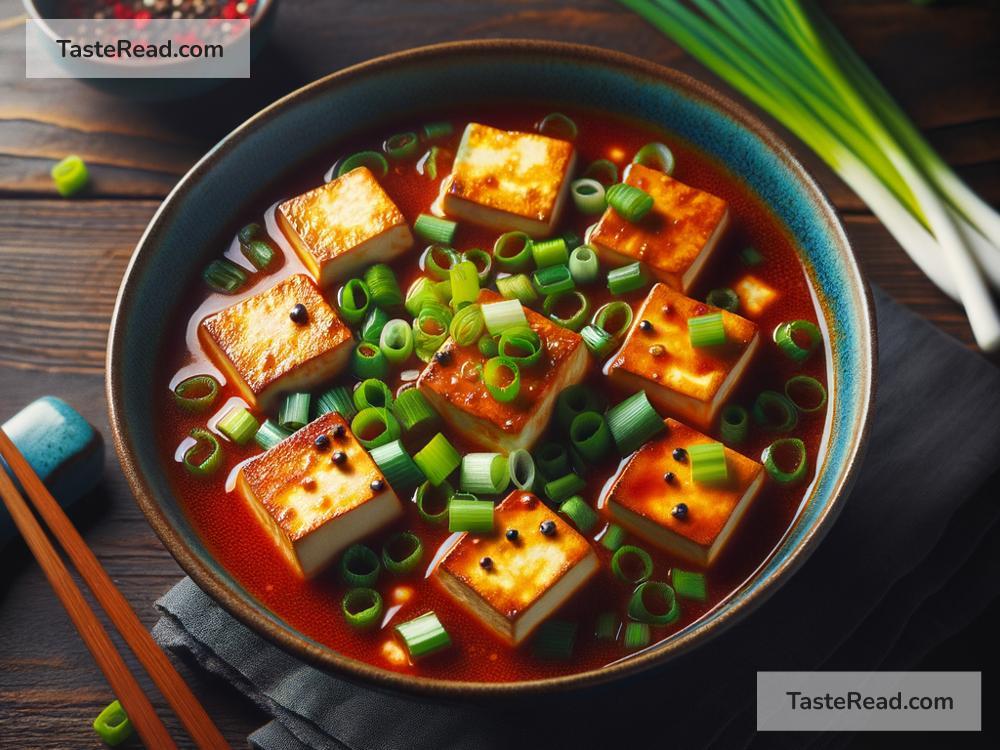How the Chinese Mapo Tofu Became a Restaurant Favorite
In the world of global cuisine, few dishes have managed to capture the hearts and taste buds of food lovers across continents quite like the Chinese dish, Mapo Tofu. This Sichuan delicacy, known for its bold flavors, spicy kick, and comforting texture, has become a staple in Chinese restaurants worldwide. But have you ever wondered how this humble tofu dish climbed the culinary ladder to achieve its restaurant favorite status? Let’s dive into the fascinating journey of Mapo Tofu.
The Birth of a Classic
To truly appreciate Mapo Tofu, it’s crucial to understand its roots. This dish hails from China’s Sichuan province, a region famous for its love of fiery spices and mouth-numbing Sichuan peppercorns. The story goes that in the late 19th century, a small eatery in Chengdu, run by a woman nicknamed “Mapo” (which means pockmarked face), was where this dish was first created. Combining tofu with minced beef or pork, chili oil, Sichuan peppercorns, fermented bean paste, and garlic, Mapo’s creation was a hit, offering a unique blend of spicy, savory, and slightly numbing flavors.
A Culinary Export
The journey of Mapo Tofu from a local delight to an international favorite began with the global spread of Chinese immigrants. As people from Sichuan moved to different parts of the world, they took their culinary traditions with them. Initially, the dish was a comfort food for the Chinese diaspora, but its complex flavors soon attracted a wider audience. Restaurants serving authentic Sichuan cuisine popped up in major cities around the world, with Mapo Tofu as a flagship offering. Its popularity was further boosted by global travelers who, after visiting China, craved the flavors they experienced on their trip.
The Appeal of Mapo Tofu
So, what makes Mapo Tofu so irresistible? First and foremost, it’s the powerful flavor profile. The harmonious combination of spicy, savory, and a unique numbing sensation creates an addictive taste that keeps people coming back for more. Secondly, its main ingredient, tofu, has a universal appeal. Tofu’s mild flavor and soft texture make it the perfect canvas for the bold Sichuan spices. Additionally, tofu’s affordability and health benefits have contributed to the dish’s popularity among a wide range of diners, including vegetarians and health-conscious individuals.
Furthermore, the adaptability of Mapo Tofu has played a significant role in its global success. Chefs around the world have put their twist on the dish, tweaking the level of spice to suit local palates or substituting ingredients to cater to different dietary restrictions. This flexibility has allowed Mapo Tofu to transcend cultural and culinary boundaries, making it a fixture on the menu of not just Chinese restaurants, but fusion and pan-Asian eateries as well.
Cultural Ambassador
Beyond its taste, Mapo Tofu serves as a culinary ambassador for Sichuan cuisine and Chinese food culture at large. It introduces diners to the concept of “málà” – the signature Sichuan flavor that combines spiciness (“má”) from chili peppers and a numbing sensation (“là”) from Sichuan peppercorns. For many, Mapo Tofu is the entry point into a broader exploration of Sichuan dishes, such as Kung Pao chicken, Sichuan hotpot, and Dan Dan noodles.
Embraced by Chefs and Foodies
The popularity of Mapo Tofu has also been propelled by the culinary community. Celebrity chefs and food influencers have shared their love for the dish, experimenting with it on cooking shows, in cookbooks, and across social media platforms. This endorsement by food experts has further solidified Mapo Tofu’s status as a must-try dish, encouraging even more people to experience its unique flavors.
Conclusion
From its humble beginnings in a Sichuan eatery to its current status as a restaurant favorite around the globe, Mapo Tofu’s journey is a testament to the power of great flavor and cultural exchange. Whether served in its traditional form or with a modern twist, Mapo Tofu continues to win over new fans, cementing its place in the pantheon of global culinary classics. So next time you’re at a Chinese restaurant, don’t hesitate to order a plate of this spicy, numbing delight – you’ll be savoring a piece of culinary history.


